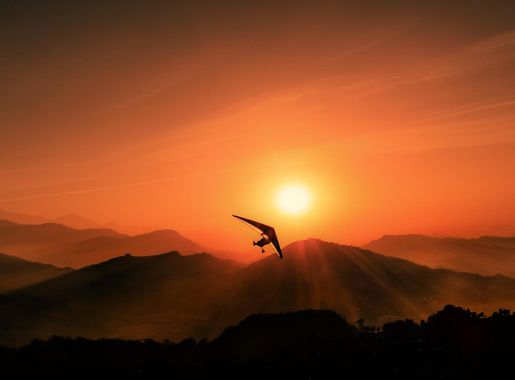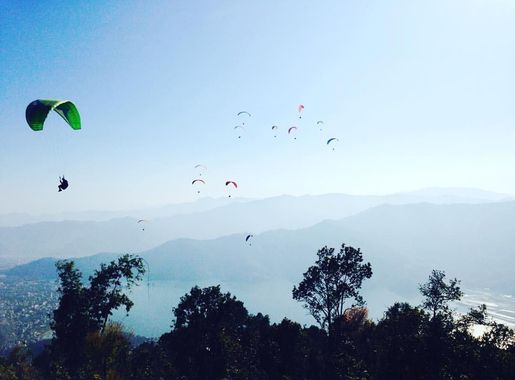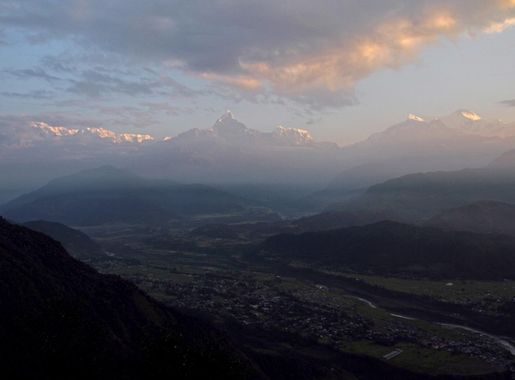
The Majestic Heights of Sarangkot: A Gem in Pokhara, Nepal
Discover Sarangkot in Pokhara, Nepal: A serene neighborhood offering stunning Himalayan views, thrilling paragliding adventures, and rich cultural experiences.
Sarangkot, nestled on a ridge at an altitude of 1,600 meters, offers one of the most breathtaking panoramas in Nepal. This enchanting neighborhood is renowned for its stunning sunrise and sunset views over the Himalayas, including the majestic peaks of Dhaulagiri, Annapurna, and Machapuchare. Tourists flock here to witness the golden hues of dawn and dusk that paint the snow-capped mountains in a mesmerizing array of colors. Adventure enthusiasts will find Sarangkot to be a haven of exhilarating activities. Paragliding is a major draw, with visitors soaring through the skies and enjoying a bird’s eye view of Pokhara Valley and Phewa Lake. The neighborhood also has numerous trails for hiking and trekking, with paths winding through lush forests and traditional villages, providing a peaceful escape and a chance to connect with nature. The local culture and hospitality add to Sarangkot's charm. The neighborhood is dotted with quaint guesthouses and homestays, where tourists can experience the warm hospitality of the local Gurung and Magar communities. Traditional Nepalese food, cultural performances, and local crafts provide a glimpse into the rich heritage of the area. A visit to Sarangkot is not just about the scenic beauty but also about immersing oneself in the local way of life.
Local tips in Sarangkot
- Arrive early for sunrise: The views are best at dawn.
- Bring warm clothing: Temperatures can be chilly, especially in the early morning.
- Book paragliding in advance: Slots can fill up quickly, particularly in peak season.
- Try local homestays: For an authentic experience and to support the local community.
- Carry cash: ATMs are scarce in the vicinity.
The Majestic Heights of Sarangkot: A Gem in Pokhara, Nepal
Sarangkot, nestled on a ridge at an altitude of 1,600 meters, offers one of the most breathtaking panoramas in Nepal. This enchanting neighborhood is renowned for its stunning sunrise and sunset views over the Himalayas, including the majestic peaks of Dhaulagiri, Annapurna, and Machapuchare. Tourists flock here to witness the golden hues of dawn and dusk that paint the snow-capped mountains in a mesmerizing array of colors. Adventure enthusiasts will find Sarangkot to be a haven of exhilarating activities. Paragliding is a major draw, with visitors soaring through the skies and enjoying a bird’s eye view of Pokhara Valley and Phewa Lake. The neighborhood also has numerous trails for hiking and trekking, with paths winding through lush forests and traditional villages, providing a peaceful escape and a chance to connect with nature. The local culture and hospitality add to Sarangkot's charm. The neighborhood is dotted with quaint guesthouses and homestays, where tourists can experience the warm hospitality of the local Gurung and Magar communities. Traditional Nepalese food, cultural performances, and local crafts provide a glimpse into the rich heritage of the area. A visit to Sarangkot is not just about the scenic beauty but also about immersing oneself in the local way of life.
Iconic landmarks you can’t miss
Sarangkot View Tower
Experience the majestic views of the Annapurna range at Sarangkot View Tower, a top destination for breathtaking sunrises and serene mountain vistas.
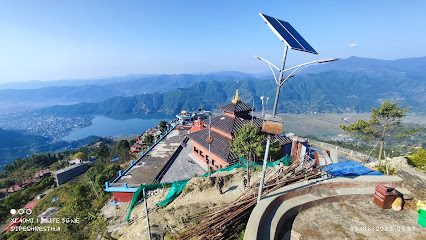
Sarangkot Sunrise Pokhara
Experience breathtaking sunrises and adventure sports at Sarangkot, Pokhara - a natural wonder in the heart of the Himalayas.
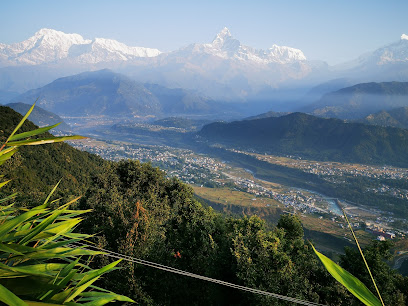
Sarangkot View Point
Experience breathtaking sunrise views over the Himalayas at Sarangkot View Point, a top hiking destination in Pokhara, Nepal.
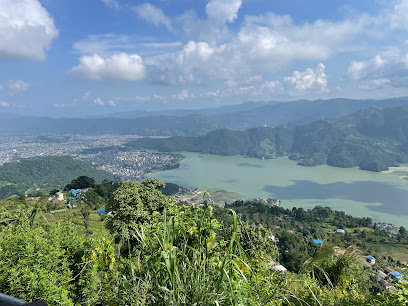
Haredanda View Point
Discover the stunning Haredanda View Point in Pokhara, offering breathtaking views of the Annapurna mountain range and a serene escape into nature.
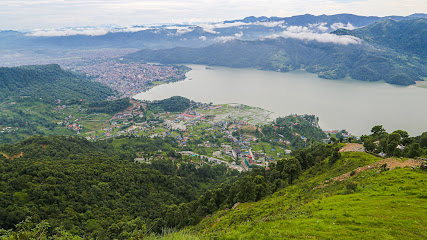
Pokhara Nepal
Discover the breathtaking beauty and rich culture of Pokhara, Nepal, a paradise for adventure lovers and tranquility seekers alike.
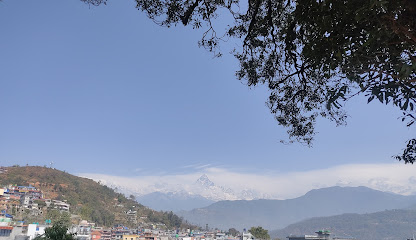
Sarangkot Shiva Temple
Explore the serene Sarangkot Shiva Temple in Pokhara, where breathtaking views meet rich Hindu traditions amidst the majestic Himalayas.
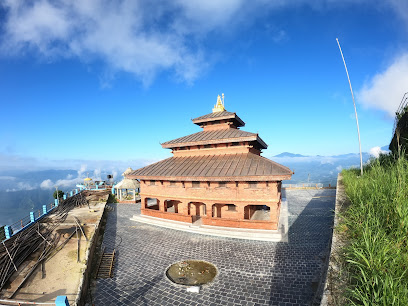
Sarangkot Waterfall
Experience the serene beauty of Sarangkot Waterfall in Pokhara, where nature's tranquility meets breathtaking landscapes.
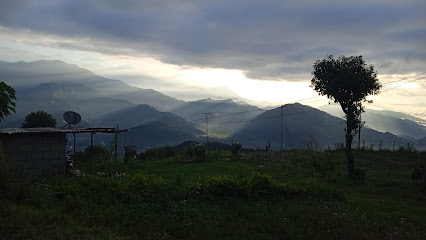
Armajadil Sarangkot
Discover the breathtaking beauty of Armajadil Sarangkot, a top tourist attraction in Pokhara, offering stunning views and thrilling adventures in the heart of the Himalayas.
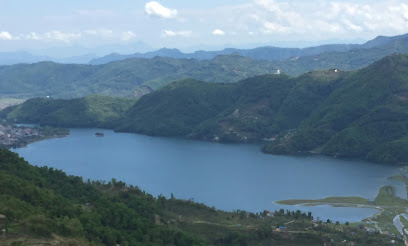
Best Bench in Sarangkot
Discover the tranquil beauty of Sarangkot's Best Bench, a must-visit tourist attraction offering breathtaking views of the Himalayas and serene surroundings.

Siddeswor Mahadev Temple
Explore Siddeswor Mahadev Temple, a serene historical landmark in Pokhara, showcasing rich cultural heritage and breathtaking natural beauty.

Sansarimai THan
Explore the enchanting historical landmark of Sansarimai THan in Pokhara, where rich culture meets breathtaking scenery, perfect for every traveler.

Sarangkot KUMAR NEPALI
Experience the breathtaking beauty of Sarangkot, where stunning views of the Annapurna range meet adventure in the heart of Nepal.

Unmissable attractions to see
Tal Barahi Temple, Pokhara
Discover the serene beauty and spiritual essence of Tal Barahi Temple, a must-visit Hindu temple in the heart of Phewa Lake, Pokhara.
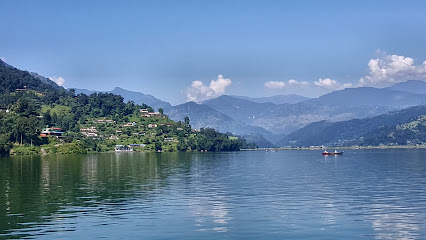
Sarangkot View Tower
Experience the awe-inspiring vistas from Sarangkot View Tower in Pokhara, Nepal, a top destination for breathtaking mountain scenery and unforgettable sunrises.
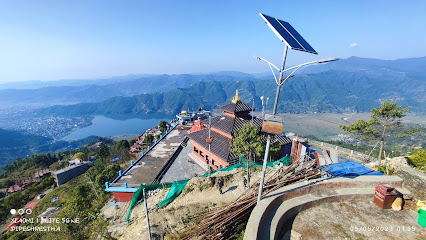
Seti River Gorge
Explore the breathtaking Seti River Gorge in Pokhara, a natural wonder known for its stunning blue waters and adventurous activities in the heart of Nepal.
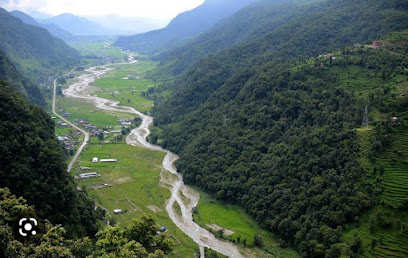
Sarangkot View Point
Discover the stunning beauty of the Himalayas at Sarangkot View Point, a premier hiking destination near Pokhara, Nepal.
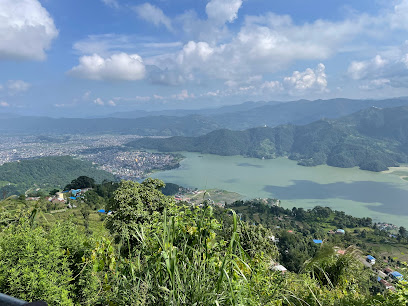
Haredanda View Point
Discover the stunning vistas of the Himalayas and serene lakes at Haredanda View Point, a must-visit destination in Pokhara, Nepal.
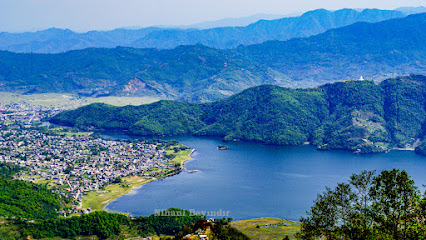
Sarangkot Waterfall
Experience the breathtaking beauty of Sarangkot Waterfall in Pokhara, a serene retreat surrounded by nature's splendor.
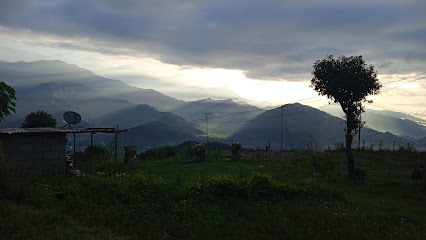
Armajadil Sarangkot
Experience breathtaking vistas and vibrant culture at Armajadil Sarangkot, a premier tourist attraction in the heart of Pokhara, Nepal.

Best Bench in Sarangkot
Experience breathtaking views and serene sunsets at Sarangkot's Best Bench, a must-visit for nature lovers and photographers in Pokhara.

Essential places to dine
Green View Restaurant
Discover breathtaking views and delicious cuisine at Green View Restaurant in Pokhara, where every meal becomes a memorable experience.
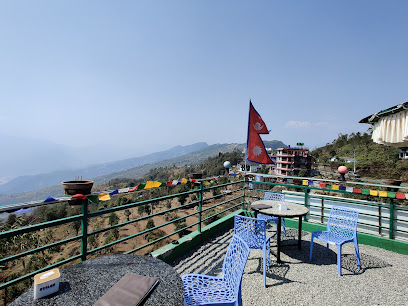
Annapurna Cafe 360
Discover Annapurna Cafe 360: where delectable dishes meet breathtaking views of the iconic Annapurna mountain range.
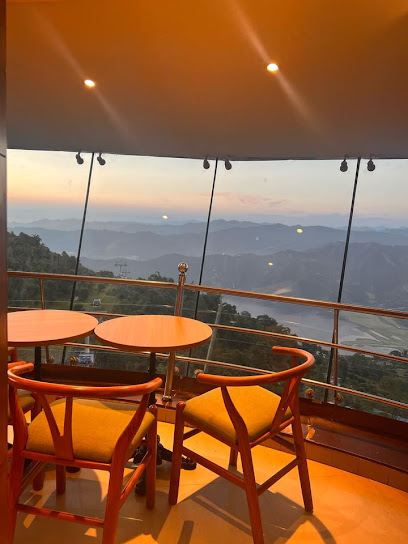
Crony Cottage
Experience authentic Nepali cuisine at Crony Cottage in Pokhara, where local flavors meet stunning mountain views.
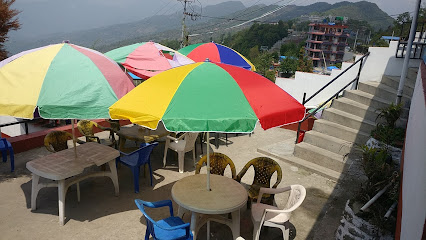
Logs Bar & Restaurant
Experience delightful flavors at Logs Bar & Restaurant in Pokhara - where local cuisine meets global tastes in a cozy setting.
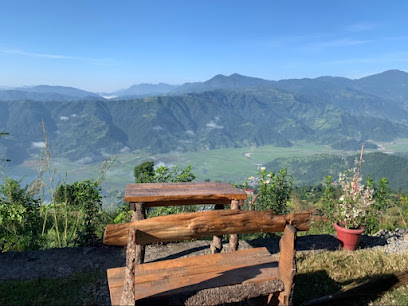
Hidden Star guest house
Experience delightful local cuisine with breathtaking river views at Hidden Star Guest House in scenic Pokhara.
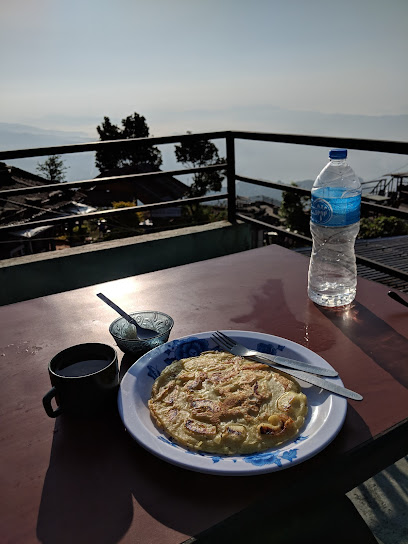
Namaste hotel and resturant
Experience authentic Nepali cuisine with stunning views at Namaste Hotel and Restaurant in Sarangkot.

Durga & Sunita (restaurant)
Experience authentic Nepali cuisine with breathtaking Himalayan views at Durga & Sunita in Sarangkot.

Dusk View Highway Khaja Ghar
Experience unforgettable family dining with breathtaking views at Dusk View Highway Khaja Ghar in beautiful Pokhara.

RESHAM'S CAFE
Discover Resham's Cafe in Pokhara for authentic Nepali cuisine amidst breathtaking Himalayan views.

ST Retreat & VILLA
Experience exquisite dining with stunning views at ST Retreat & VILLA in Sarangkot, Pokhara.

Markets, malls and hidden boutiques
Chetana Women's Skill Developement
Explore Chetana Women's Skill Development in Pokhara for unique, handcrafted gifts that empower local artisans and celebrate Nepal’s rich culture.
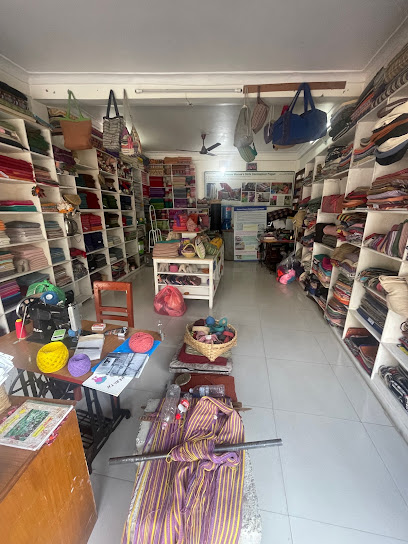
Holy Himalayan Souvenir
Explore the hidden gem of Pokhara, Holy Himalayan Souvenir, for unique artisanal crafts and authentic Himalayan treasures that celebrate local heritage.

New Unique Fancy
Explore unique clothing and handcrafted apparel at New Unique Fancy, a hidden gem in Pokhara that celebrates local craftsmanship.

Splendour boutique pokhara
Explore unique clothing styles at Splendour Boutique in Pokhara - a blend of traditional and modern fashion reflecting Nepal's vibrant culture.
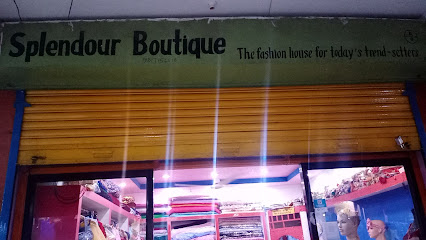
Sarangkot Fancy and Cosmetics
Discover unique fashion at Sarangkot Fancy and Cosmetics in Pokhara, where tradition meets contemporary style amidst stunning mountain views.

Bikas Stores
Explore Bikas Stores in Sarangkot for a gourmet grocery experience that captures the essence of Nepali flavors and culinary delights.

Neupane Niwas
Discover the essence of Nepali fashion at Neupane Niwas, where traditional and modern styles meet in the heart of Pokhara.

TILIJA KIRANA SHOP
Discover local flavors and unique souvenirs at TILIJA KIRANA SHOP in Sarangkot, Pokhara - a must-visit for every traveler.
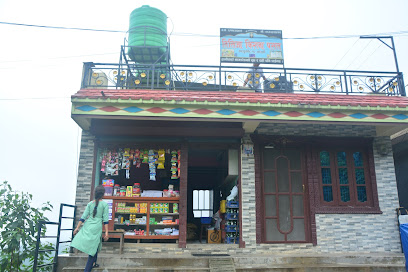
Universal Departmental store
Explore Universal Departmental Store in Pokhara for all your shopping needs and discover unique souvenirs that capture the essence of Nepal.

स्मृति टेलर्स
Explore the vibrant styles of स्मृति टेलर्स, a clothing store in Pokhara that offers unique apparel reflecting local craftsmanship and modern trends.

Essential bars & hidden hideouts
Krazy Gecko
Discover the lively Krazy Gecko in Pokhara, where delicious food meets a vibrant atmosphere and stunning views of the Annapurna mountains.
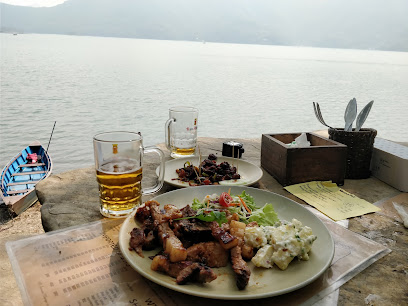
The Boss Restaurant
Experience the best of barbecue and steak dining at The Boss Restaurant in Pokhara with stunning lakeside views and fresh local ingredients.
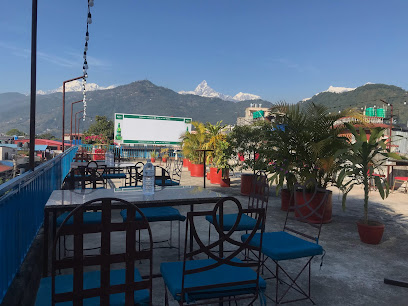
Longest Bar
Discover the Longest Bar in Pokhara, where vibrant energy meets exquisite drinks in a stunning atmosphere perfect for relaxation and socializing.
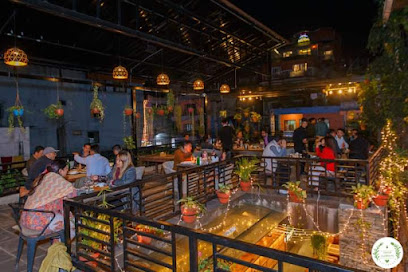
Oxygen Lounge Bar
Experience a vibrant nightlife at Oxygen Lounge Bar in Pokhara, where cocktails meet live music and stunning views.

Feel Great Bar
Unwind and experience the vibrant nightlife of Pokhara at Feel Great Bar, where great drinks meet lively ambiance.
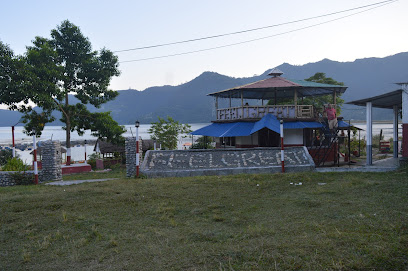
The Putali Bar
Experience the vibrant atmosphere and stunning views at The Putali Bar in Pokhara, the perfect spot to unwind after a day of adventure.
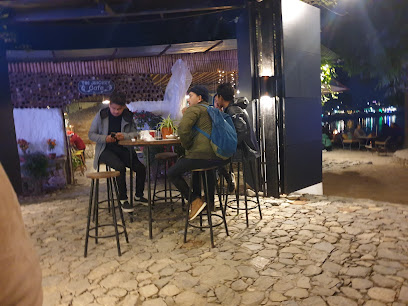
Kotas bar and grill
Experience the vibrant flavors of Nepal at Kotas Bar and Grill, a lakeside gem offering delicious grilled specialties and stunning views.
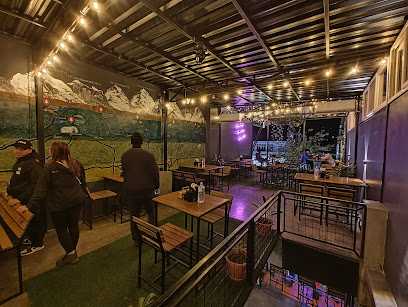
Sunset view & Shiva temple
Experience breathtaking sunsets and spiritual serenity at the Sunset view & Shiva temple in Pokhara, a true treasure of Nepal's natural beauty and culture.

Harpan Khola Sunset Point
Experience the stunning sunsets and serene ambiance at Harpan Khola Sunset Point in Pokhara, a perfect retreat for travelers seeking natural beauty and relaxation.
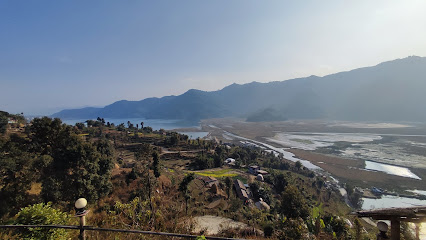
Branigan's Irish Pub
Discover the heart of Ireland in Pokhara at Branigan's Irish Pub, where every meal is a celebration of flavor and friendship.
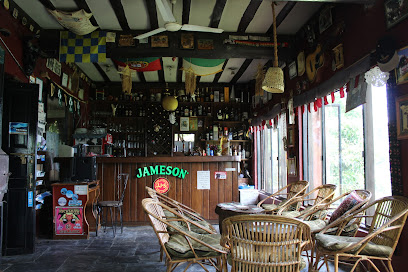
Local Phrases
-
- Helloनमस्ते
[namaste] - Goodbyeफेरि भेटौं
[feri bhetau] - Yesहो
[ho] - Noहोइन
[hoin] - Please/You're welcomeकृपया
[krupaya] - Thank youधन्यवाद
[dhanyabad] - Excuse me/Sorryमाफ गर्नुहोस्
[maaf garnuhos] - How are you?तिमीलाई कस्तो छ?
[timilai kasto cha?] - Fine. And you?ठिकै। तिमीले?
[thikai. timile?] - Do you speak English?तिमी अंग्रेजी बोल्नुहुन्छ?
[timi angreji bolnuhunchha?] - I don't understandमलाई बुझिन्न
[malai bujhinna]
- Helloनमस्ते
-
- I'd like to see the menu, pleaseकृपया मेन्यू हेर्न चाहन्छु
[krupaya menu hern chahanchu] - I don't eat meatम भांसामा खाँदिन
[ma bhansa ma khandin] - Cheers!चियर्स!
[cheers!] - I would like to pay, pleaseकृपया चुक्ती गर्न चाहन्छु
[krupaya chukti garn chahanchu]
- I'd like to see the menu, pleaseकृपया मेन्यू हेर्न चाहन्छु
-
- Help!मदत गर्नुहोस्!
[madat garnuhos!] - Go away!सरेनुहोस्!
[sarenuhos!] - Call the Police!पुलिसलाई बोलाउनुहोस्!
[polis lai bolaunuhos!] - Call a doctor!डाक्टरलाई बोलाउनुहोस्!
[daktar lai bolaunuhos!] - I'm lostमलाई हराएको छ
[malai haraeko cha] - I'm illमलाई बिरामी छ
[malai birami cha]
- Help!मदत गर्नुहोस्!
-
- I'd like to buy...म खरिद गर्न चाहन्छु...
[ma kharid garn chahanchu...] - I'm just lookingम सिर्जना गर्दैछु
[ma sirjana gardaichu] - How much is it?यसको मुल्य कति हो?
[yasko mulya kati ho?] - That's too expensiveयो धेरै महँगो छ
[yo dherai mahango cha] - Can you lower the price?मूल्य हटाउन सक्छौ?
[mulya hataun sakchau?]
- I'd like to buy...म खरिद गर्न चाहन्छु...
-
- What time is it?कति बजेको छ?
[kati bajeko cha?] - It's one o'clockएक बजेको छ
[ek bajeko cha] - Half past (10)दस बजे अर्धा गएको छ
[das baje ardha gayeko cha] - Morningबिहान
[bihan] - Afternoonदिउँसो
[diunso] - Eveningसाँझ
[sajh] - Yesterdayगतवार
[gatwar] - Todayआज
[aaj] - Tomorrowभोलि
[bholi] - 1एक
[ek] - 2दुई
[dui] - 3तीन
[tin] - 4चार
[char] - 5पाँच
[panch] - 6छ
[cha] - 7सात
[sat] - 8आठ
[aath] - 9नौ
[nau] - 10दस
[das]
- What time is it?कति बजेको छ?
-
- Where's a/the...?...कहाँ छ?
[...kaha cha?] - What's the address?ठेगाना के हो?
[thegana ke ho?] - Can you show me (on the map)?मलाई देखाउन सक्छौ?
[malai dekhaun sakchau?] - When's the next (bus)?अर्को (बस) कहिले छ?
[arko (bas) kahile cha?] - A ticket (to ....)टिकट (... लाई)
[ticket (... lai)]
- Where's a/the...?...कहाँ छ?
History of Sarangkot
-
Sarangkot, located just a few kilometers from the bustling city of Pokhara, has been an important site since ancient times. Its strategic hilltop position offers sweeping views of the Annapurna range and the Phewa Lake, making it a vital lookout point for various local communities. Historical records suggest that Sarangkot was a significant military outpost during the unification of Nepal in the 18th century.
-
The culture of Sarangkot is shaped by its diverse ethnic groups, including Gurungs and Brahmins. These communities have preserved their unique traditions, languages, and festivals, which play a crucial role in the local identity. The annual festivals, such as Dashain and Tihar, are celebrated with great enthusiasm, showcasing the rich cultural tapestry of the region.
-
In recent decades, Sarangkot has emerged as a popular destination for tourists seeking breathtaking sunrise views and adventure activities like paragliding. This shift has significantly impacted the local economy, leading to the development of guesthouses, restaurants, and tour services, while also raising concerns about preserving the area’s natural beauty and cultural heritage.
-
Sarangkot is home to several ancient temples, including the revered Bhadrakali Temple, which attracts pilgrims from across the region. These temples are not only places of worship but also serve as cultural hubs where traditional rituals and celebrations take place, reflecting the spiritual heritage of the area.
-
Sarangkot's elevated position has historically made it a key military location. During the Anglo-Nepalese War in the early 19th century, its vantage point provided crucial surveillance capabilities. The remnants of old fortifications can still be seen today, standing as a testament to the area's military past and its strategic relevance in defending the region.
Sarangkot Essentials
-
Sarangkot is easily accessible from various neighborhoods in Pokhara. The most common way to reach Sarangkot is by taxi or private vehicle, which takes about 30 minutes from Lakeside Pokhara. For budget travelers, local buses run frequently from the main bus station in Pokhara to Sarangkot, offering a more economical option. Alternatively, you can also opt for a scenic hike from Lakeside, which takes approximately 1.5 to 2 hours.
-
Sarangkot is a small village, making it easy to explore on foot. For those looking to venture further, renting a bicycle or scooter is a popular option. Local taxis are also available for hire, providing convenient transportation for longer distances or after dark. Note that public transport options within Sarangkot are limited, so plan accordingly.
-
Sarangkot is generally safe for tourists, but standard precautions should be taken. Avoid walking alone in poorly lit areas at night and keep your belongings secure, especially in crowded places during peak tourist seasons. Although crime rates are low, petty theft can occur, particularly in busy areas. It’s advisable to stay vigilant and inform your accommodation if you feel unsafe.
-
In case of emergency, dial 102 for ambulance services or 100 for police assistance in Nepal. The nearest medical facilities are located in Lakeside, about a 30-minute drive from Sarangkot. It's recommended to have travel insurance that covers medical emergencies. For minor health issues, local pharmacies can be found in Pokhara, but they may be limited in Sarangkot.
-
Fashion: Do wear modest clothing, especially when visiting local temples or interacting with villagers. Avoid revealing outfits. Religion: Do respect local customs and traditions. Remove shoes before entering homes or temples. Public Transport: Do be polite and offer your seat to the elderly or pregnant women. Don’t eat or drink on public transport. Greetings: Do greet locals with a smile and a friendly 'Namaste.' Don't forget to use both hands when giving and receiving items. Eating & Drinking: Do try local dishes and accept food offers. Don’t waste food or refuse hospitality, as it can be considered rude.
-
To experience Sarangkot like a local, consider waking up early to catch the breathtaking sunrise over the Annapurna Range. Engage with local farmers and learn about their agricultural practices, or participate in a cooking class to learn how to prepare traditional Nepali dishes. Visit the nearby viewpoints for stunning panoramic views and be sure to try local street food for an authentic culinary experience.
Nearby Cities to Sarangkot
-
Things To Do in Bandipur
-
Things To Do in Gorkha
-
Things To Do in Chitwan
-
Things To Do in Lumbini
-
Things To Do in Kathmandu
-
Things To Do in Patan
-
Things To Do in Bhaktapur
-
Things To Do in Nagarkot
-
Things To Do in Namche Bazaar
-
Things To Do in Patna
-
Things To Do in Lucknow
-
Things To Do in Varanasi
-
Things To Do in Kanpur
-
Things To Do in Darjeeling
-
Things To Do in Siliguri

